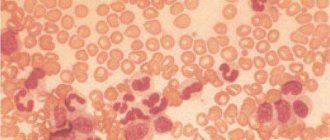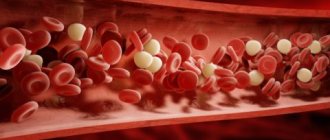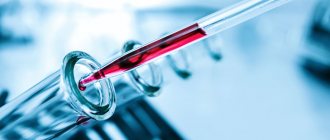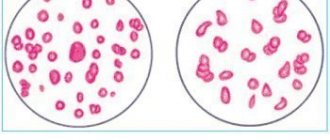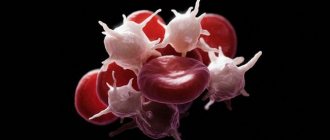The levels of triglycerides in the blood of women are the most important factor in the health of the fair sex. Let's decipher together the correct indicators of the biochemical analysis of blood serum for TG.
Often, patients are perplexed when the doctor prescribes tests, including a biochemical analysis to determine the normal level of triglycerides (TG): what kind of substances these are, and why such tests are needed in women. Let's figure out together what a typical blood test in women is and decipher the strange numerical values of the tests.
What are triglycerides?
Triglycerides (TG, triacylglycerols, TAG, or triacylglycerides) are an ester formed from glycerol and three fatty acids (from tri- and glycerides). Triglycerides are the main components of body fat in humans and animals, as well as vegetable fat. There are many different types of triglycerides, divided into saturated and unsaturated.
Saturated fats are “saturated” with hydrogen—all available sites where hydrogen atoms can bond to carbon atoms are occupied. They have a higher melting point and are more likely to be solid at room temperature. Unsaturated fats have double bonds between some carbon atoms, reducing the number of places where hydrogen atoms can bond with carbon atoms. They have a lower melting point and are more likely to be liquid at room temperature.
This is a type of fat found in the blood and is the most common type of fat in the body. Triglycerides are essential for health, but in excess amounts they can be harmful and can increase the risk of developing cardiovascular disease. For this reason, scientists believe that triglyceride levels may be an important measure of metabolic health.
When you consume more calories than you need, the body stores those calories as triglycerides, which can be used later by the body for energy.
Most of the fats we eat, such as natural oils (polyunsaturated and monounsaturated), animal fats and trans fats, are triglycerides. Healthy and unhealthy fats contribute to elevated triglyceride levels. Trans fats (such as margarine) and saturated fats (such as fatty red meat, poultry skin, lard and some dairy products) may raise triglyceride levels more than small portions of meat and unsaturated fats such as olive oil, avocado , nuts and low-fat dairy products. Refined, simple carbohydrates and alcohol can also increase triglyceride levels.
High triglyceride levels can also be a side effect of medications such as beta blockers, birth control pills, steroids, and diuretics ().
Lipids
Triglycerides and cholesterol are members of the fat family (also called lipids) but have different functions. Cholesterol is a fat-like substance that is used by the body to produce hormones, vitamin D, and is part of the membrane surrounding cells. Cholesterol is similar to wax and has no odor. The liver produces it from animal products.
Cholesterol and triglycerides in their pure forms cannot mix with the blood. As a result, the liver sends them bundled with proteins called lipoproteins. Lipoproteins move cholesterol and triglycerides throughout the body through the bloodstream ().
There are three types of lipoproteins. These are low-density lipoproteins (LDL), very low-density lipoproteins (VLDL), and high-density lipoproteins (HDL). LDL, also called LDL cholesterol, is considered the “bad” kind of lipoprotein because it contributes to the buildup of plaque in the arteries. HDL cholesterol is considered "good" cholesterol because it removes LDL from the arteries ().
What are the dangers of high triglyceride levels?
High levels of triglycerides lead to the development of atherosclerosis and threaten the occurrence of heart attacks and strokes
If triglyceride levels in the blood are too high, they can cause cholesterol plaques to form on the walls of the arteries. Scientists aren't sure how or why triglycerides cause plaque formation, but they do know that people with high triglyceride levels are more likely to have high LDL levels. When cholesterol accumulates in the arteries, the artery walls can harden or narrow, called atherosclerosis.
Atherosclerosis increases the risk of heart attack, stroke and cardiovascular disease. Women with high triglyceride levels are particularly at risk of developing cardiovascular disease. Scientists believe that high triglyceride levels may also indicate other conditions that increase the risk of these diseases, such as obesity and metabolic syndrome ().
Extremely high triglyceride levels can lead to acute pancreatitis, according to the Mayo Clinic. It may also be a sign of type 2 diabetes, hypothyroidism, kidney disease and liver disease, or rare genetic conditions that are related to metabolism.
It notes that more research is needed to be sure that high triglyceride levels are an independent risk for heart disease and other diseases (). These diseases have other risk factors, such as high cholesterol, so the role of triglycerides is still being determined.
Some examples have shown that triglycerides may be an independent risk factor for the disease. Additionally, a 2007 study published in the Annals of Internal Medicine found that young men with the highest triglyceride levels had a four times higher risk of developing cardiovascular disease than age-matched patients with the lowest triglyceride levels ( ).
Why do triglycerides drop?
An increase in thyroid hormones often provokes a decline in the level of this biological compound
A reading below 0.30 mmol/l is considered a downward deviation from the norm. This is caused by a lack of fat intake into the body or a violation of their digestibility and triglyceride synthesis. The result of this condition is inhibition of biological processes or their complete stop. There is a lack of necessary energy, which leads to dangerous diseases.
Low triglyceride levels are caused by the following reasons:
- hyperthyroidism or thyrotoxicosis;
- liver diseases;
- chronic pulmonary diseases;
- pathologies of the gastrointestinal tract;
- disruptions in the absorption of nutrients;
- lack of appetite.
A decrease in triglycerides is possible after treatment with the following drugs: ascorbic acid, clofibrates, statins, fenofibrates. Proponents of fat-free diets also often become patients who experience “hunger” for this biological compound. The cause of the decrease may be malabsorption syndrome, characterized by impaired absorption of nutrients in the small intestine.
Important! Severe injuries and burns of the skin help lower the level of triglycerides in the blood below acceptable levels.
An increase in thyroid hormones often provokes a decline in the level of this biological compound. Hyperthyroidism causes heart disease, myocardial complications and tachycardia. If left untreated, the organ reduces activity and cannot pump the required volume of blood. Processes in the body slow down, including metabolic ones. As a result, the conversion of fat into energy is inhibited, as is triglyceride synthesis.
Often, biochemical analysis reveals reduced triglyceride levels in patients trying to lose weight and avoiding energy foods. The main symptoms that indicate a decrease in triglycerides in the blood:
- Lung diseases. Diagnosed by the presence of shortness of breath, lack of air, incessant cough with sputum production. If the blues has become chronic, it is considered incurable. The disease can be prevented or mitigated by quitting smoking in the first place. At the same time, energy products must be consumed daily.
- Damage to kidney tissue. Specialists who pay attention to the low content of fat in the blood of this category can promptly prevent diseases of the main “filters”.
- Hyperfunction of the thyroid gland is the cause of low triglycerides. In this case, the examination results reveal not only a decrease in TG, but also the presence of toxins and excessive hormone content. Blood hemostasis is disrupted and internal organs suffer. The result is increased metabolism and oxidative processes, which depletes all the body's reserves.
- Ischemic stroke (cerebral infarction). A dangerous diagnosis that can lead to death. Accompanied by a decrease in TG and blood starvation of the brain.
The listed diseases can be diagnosed in the early stages if a decrease in triglycerides is detected in a timely manner. Diagnostics can prevent the disease from reaching a chronic stage and prevent the development of deadly diseases.
Causes of Abnormally High Triglyceride Levels
High levels of triglycerides in the blood are medically known as hypertriglyceridemia. Conditions that can cause elevated triglyceride levels include:
- Poorly controlled diabetes mellitus;
- Kidney disease;
- Alcoholism;
- Hypothyroidism;
- Liver diseases, including cirrhosis;
- Obesity;
- Genetic disorders of lipid metabolism.
Risk factors for high triglyceride levels also include:
- Age – the older you get, the higher your TG levels.
- Body weight – being overweight increases the risk of high TG levels.
- Physical activity – a sedentary lifestyle increases the risk of high TG levels.
Hypertriglyceridemia can also occur with certain medications, such as birth control pills, estrogens, beta blockers, and immunosuppressants. ()
Reasons for low concentration
The most common reason for a decrease in triglyceride levels in the blood is improper organization of the daily diet:
- poor diet – eating on the go, unhealthy snacks, regularly skipping one or more meals (malnutrition);
- unbalanced diet - poor nutritional composition of dishes, strict calorie restriction, unreasonable consumption of low-fat foods.
In more rare cases, hypotriglyceridemia indicates the presence of serious diseases in the body:
- Pulmonary pathologies – bronchitis in the acute stage and chronic obstructive pulmonary disease (COPD).
- Malfunctions of the gastrointestinal tract - impaired absorption of nutritional components (malabsorption syndrome) and lactose intolerance (lactase deficiency).
- Liver damage - hepatocerebral dystrophy (Wilson-Konovalov disease), long-term intoxication and pancreatitis.
- Hyperthyroidism is the excessive production of thyroid (hyperthyroidism or thyrotoxicosis) and parathyroid (hyperparathyroidism) hormones.
In addition, certain groups of drugs can artificially reduce the concentration of neutral fats in the blood:
- antilipid medications (statins, fibrates), nicotinic (vitamin PP, B3 niacin) and ascorbic (vitamin C) acids;
- antiretrovirals (ARVs), anticoagulants (anticoagulants), antacids (antacids), and antibiotics.
A short-term decrease in triglyceride levels can be a consequence of exhausting physical and psycho-emotional stress, injuries of various types (including post-operative), as well as radiation exposure or chemotherapy.
Features of deviations in women
Young women will always have lower triglycerides than men of the same age: this is due to the high consumption of fats for the synthesis of estrogen. However, after 45–55 years, having too low a fat level can be dangerous for the fair sex: hypotriglyceridemia aggravates the symptoms of menopause.
Progesterone-containing drugs - progestogens (progestins, gestagens) have a strong effect on reducing the concentration of triglycerides in the blood: they are prescribed to women during pregnancy, planning to conceive, polycystic ovary syndrome (PCOS) and for contraception.
Features of deviations in men
In adult men, low levels of triglycerides are often observed while taking medications containing mepartricin: they are used for diseases that cause functional urinary disorders and for benign prostatic hyperplasia (prostate adenoma).
Normal blood triglyceride levels
To have good health, it is necessary to strive for normal levels of triglycerides in the blood. The following numbers will help you have an idea of the normal TG level in the blood:
- Normal TG level : less than 150 mg/dL or less than 1.7 mmol/L;
- Borderline high TG levels : 150 to 199 mg/dL or 1.8 to 2.2 mmol/L;
- High TG level : from 200 to 499 mg/dL or from 2.3 to 5.6 mmol/L;
- Very high TG level : 500 mg/dL or higher, or 5.7 mmol/L or higher.
The Ornament application for storing and organizing medical tests will help you monitor the dynamics of medical indicators. To load data into Ornament, you just need to take a photo of the form with the test results or select a PDF file.
Ornament will clearly indicate deviations from the norm in yellow, and will also evaluate the condition of the organs and systems of the body from 1 to 5 points. Scores below 4 points and the presence of “yellow” indicators indicate health problems - you may need to consult a doctor. You can also discuss your health in Ornament - there are doctors among its users.
The Ornament app is available for free on the Play Market and App Store.
What do low triglycerides mean?
Basically like elevated
, and low triglycerides (TG) in the blood (in women and men) indicate already “acquired” (some) diseases, or serious risks of their development.
Only the lists of these diseases are DIFFERENT! That is, for low triacylglycerides (TAGs) they are the same, for high triacylglycerides they are different. However, if in the first case (where TG is below normal) this condition can most often be caused by taking medications, then in the second (where TG is higher than normal) this occurs much less frequently. Mainly in women who actively use contraceptives (containing estrogens). Read more about this (link) HERE
.
As for the diet, it’s not difficult to guess: if the “culprit” of high values of triacylglycerides (TAG) is an excess of fatty foods, then the root cause of low values is malnutrition!
Also read (follow the link) about WHAT ARE TRIGLYCERIDES (AND WHAT IS THEIR NORMAL IN THE BLOOD OF WOMEN AND MEN / IN TABLES)
Triglycerides - norm by age: table
| Age | Floor | Normal triglycerides |
| Newborns | boys and girls | Half the normal amount for an adult. Female newborns have higher triglyceride levels than male newborns. |
| Children 0 - 9 years old | boys and girls | 75 mg/dl or 0.85 mmol/l |
| Children and teenagers 10 – 19 years old | male and female | 90 mg/dl or 1.02 mmol/l |
| Young adults 20 - 29 years old | men | 103 mg/dL or 1.16 mmol/L |
| Young adults 20 - 29 years old | women | 97 mg/dL or 1.1 mmol/L |
| Adults 30 - 39 years old | men | 122 mg/dl or 1.38 mmol/l |
| Adults 30 - 39 years old | women | 102 mg/dL or 1.15 mmol/L |
| Adults 40 - 49 years old | men | 153 mg/dL or 1.73 mmol/L |
| Adults 40 - 49 years old | women | 104 mg/dl or 1.17 mmol/l |
| First trimester of pregnancy | women | 40-159 mg/dl or 0.45-1.8 mmol/l |
| Second trimester of pregnancy | women | 75-382 mg/dl or 0.85-4.32 mmol/l |
| Third trimester of pregnancy | women | 131-453 mg/dL or 1.48-5.12 mmol/L |
| During menopause | women | 16% higher than adult women |
| Adults 60+ years | men and women | women have higher triglyceride levels than men |
Normal triglyceride levels
There is a directly proportional relationship between the number of years and triglycerides. Blood biochemistry will help identify their level. The indicator (like glucose) is measured in mmol/l.
Important. The older a person is, the higher the triglyceride level.
Due to active metabolism and increased consumption of all nutrients by the body in children and adolescents, the rate does not rise above 1.4 mmol/l. The lower limit of normal is 0.4 mmol/l.
In adults, triglyceride levels range from 0.5 to 3.7 mmol/L. In older people, the lower limit of normal shifts upward (starts at 0.65), and the upper limit, on the contrary, drops to 3.3 mmol/l.
Men, as a rule, have slightly higher triglyceride levels than the fairer sex. This is due to the antiatherogenic effect of estrogens and, on the contrary, the atherogenic effect (promoting the deposition of “harmful” lipids) of male sex hormones.
If triglycerides are elevated in blood biochemistry, this is a reason to be examined in more detail in order to identify the cause.
| Age, years | Triglyceride level, mmol/l | |
| Men | Women | |
| To 10 | 0,34-1,13 | 0,40-1,24 |
| 10-15 | 0,36-1,41 | 0,42-1,48 |
| 15-20 | 0,45-1,81 | 0,40-1,53 |
| 20-25 | 0,50-2,27 | 0,41-1,48 |
| 25-30 | 0,52-2,81 | 0,42-1,63 |
| 30-35 | 0,56-3,01 | 0,44-1,70 |
| 35-40 | 0,61-3,62 | 0,45-1,99 |
| 40-45 | 0,62-3,61 | 0,51 −2,16 |
| 45-50 | 0,65-3,70 | 0,52-2,42 |
| 50-55 | 0,65-3,61 | 0,59-2,63 |
| 55-60 | 0,65-3,23 | 0,62 2,96 |
| 60-65 | 0,65-3,29 | 0,63-2,70 |
| 65-70 | 0,62-2,94 | 0,68-2,71 |
Table: Normal triglyceride levels depending on age and gender
Measuring triglyceride levels
Finding out your triglyceride levels is quite easy. Your doctor can detect them with a simple blood test. They are usually measured whenever your doctor performs a blood test called a lipid profile, which measures your total cholesterol, HDL, LDL and triglyceride levels. The American Heart Association recommends that everyone over the age of 20 have their lipid profile checked at least every 4 to 6 years. If your levels are elevated, you may need to be tested more often.
It is normal for triglyceride levels to remain high after eating. For this reason, doctors recommend waiting 12 hours after eating or drinking to check your triglyceride levels. Other factors that can affect triglyceride test results include blood alcohol levels, menstrual cycle, recent exercise, and time of day.
What do triglycerides show in a blood test?
Checking the levels of fats inside the veins and arteries is part of a lipid profile that determines the presence of heart disease. Triglycerides in a blood test indicate the possibility of developing hypertension, coronary heart disease, myocardial infarction, etc. For adults, the procedure is recommended every 4-6 years. Children need to be tested once before age 10 to determine if there are any congenital abnormalities.
How to lower triglycerides in the blood
Eating fatty fish helps reduce triglyceride levels in the blood
If you've had your triglycerides tested and are concerned about your triglyceride levels, you can take steps to lower them. Most actions involve adjusting your diet and increasing physical activity. Experts offer the following advice for lowering triglyceride levels:
- Bring your weight back to normal . If you are overweight, losing 3 to 5 kilograms may help lower your triglyceride levels.
- Avoid sweet and refined foods . Simple carbohydrates such as sugar can increase triglyceride levels.
- Give preference to healthy fats . Replace the saturated fat found in meat with healthier monounsaturated fats, which come from plant foods such as olive oil, peanut oil and sunflower oil. Replace your red meat intake with fish rich in omega-3 fatty acids, such as mackerel, sardines, herring, anchovies and salmon.
- Limit your alcohol intake . Alcohol is high in calories and sugar and has been shown to increase triglyceride levels.
If lifestyle and dietary changes do not sufficiently reduce triglyceride levels, your doctor may prescribe medications to be taken along with dietary changes and added exercise. According to the Mayo Clinic, the following medications are often prescribed:
Niacin
Niacin is also known as vitamin B3 and niacin. This water-soluble vitamin is important for the health of the body and is found in foods such as milk, eggs, rice, fish, lean meats and legumes (). For people with high triglycerides or high LDL cholesterol, a very high dose of niacin may be prescribed. It is important to take niacin only in doses recommended by your doctor because it can be toxic in large, unregulated doses. It may also interact with other medications, which is not desirable.
Niacin is usually prescribed to people with triglyceride levels greater than 500 mg/dL (5.7 mmol/L). Niacin can increase HDL (good) cholesterol levels by more than 30 percent (). It has also been associated with slowing the progression of atherosclerosis and reducing the risk of heart attacks and strokes when taken in combination with statins or colestipol (other cholesterol-lowering drugs) ().
Statins
Statins are well known for their cholesterol-lowering abilities. This type of drugs includes:
- Atorvastatin (Lipitor)
- Simvastatin (Zocor)
Statins interfere with the production of LDL cholesterol in the liver and increase HDL cholesterol levels. They are usually prescribed to people with high LDL cholesterol, atherosclerosis, or diabetes. Although they are relatively safe for most people, muscle pain is a common side effect.
Omega-3 fatty acids
These fatty acids, found in fish oil, are an important part of any good diet. In high doses, they can help lower triglyceride levels. Scientists theorize that omega-3 fatty acids' ability to reduce inflammation may be related to its triglyceride-lowering capabilities ().
Because high doses of fish oil can add large amounts of calories, interfere with blood clotting, and cause nausea and diarrhea, omega-3 fatty acid supplements are only recommended for people with triglyceride levels above 500 mg/dL (5.7 mmol/L). Here are some prescription fish oil names:
- Epanova
- Lovaza
- Vascepa
Fish oil does not lower cholesterol levels.
You can learn more about what omega-3 fatty acids are, what role they play in the body, why they are useful and where they are found on this page - Omega-3 fatty acids: what they are, their role, food sources.
Fibrates
These drugs are derivatives of fibric acid. They are usually prescribed to people with very high triglyceride levels—more than 500 mg/dL (5.7 mmol/L). They also lower LDL cholesterol levels, although to a slightly lesser extent than triglyceride levels (). When used primarily to lower cholesterol, they are usually taken in combination with statins. The mechanism by which fibrates lower triglyceride levels is unknown, although scientists have hypothesized that it involves regulation of the liver's release of triglycerides into lipoproteins.
Triglycerides are elevated - what does this mean?
High triglyceride levels, even without other risk factors, put you at risk for developing coronary heart disease. People with high triglyceride levels often have low HDL levels. Because it is good cholesterol, low levels increase your risk of developing heart disease. Some people with extremely high triglyceride levels, such as those above 1,000 mg/dL (11.4 mmol/L), often have genetic disorders, according to the American Heart Association. Or they may have other underlying health conditions, such as diabetes, obesity or heavy drinking. Even triglyceride levels of 500 mg/dL (5.7 mmol/L) or higher can cause severe, painful inflammation of the pancreas called pancreatitis.
Tags: Triglycerides
- Related Posts
- 11 foods that are high in cholesterol
- How to lower blood cholesterol levels at home
- 9 Myths About Dietary Fat and Cholesterol
« Previous entry
